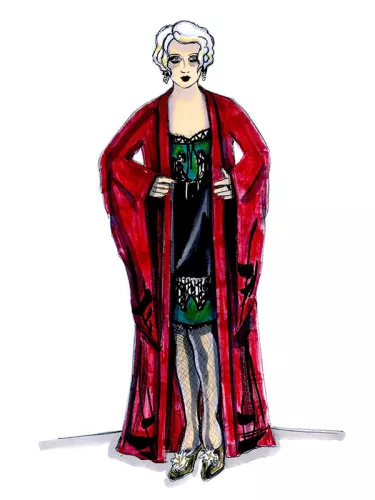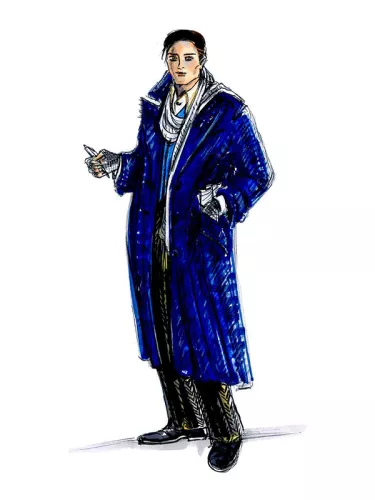Cheat sheet: La Bohème
Everything you need to know about the original bohemian love story
This production is...
Director Gale Edwards has moved the action to 1930s Berlin, among the social upheaval of the last months of the Weimar Republic.
It’s a gift to the designers (sets: Brian Thomson, costumes: Julie Lynch), who have drawn a world of sumptuous velvet and glittering fairy lights.
Marcello paints his work upon the walls of the bohemian’s freezing garret, while the Café Momus is a hedonistic wonder of revolving balconies, fringes and fishnets.
The costumes
Take one look at Julie Lynch’s costume designs for La Bohème and it’s clear the designer is a details person.
More than 40 people are involved in the creation process, including the wardrobe buyer, cutters, makers, art department, shoemaker, knitter, wig-maker and even a milliner.


Who was the composer?
Born in Tuscany in 1858, Puccini was an Italian composer who took Verdi’s crown as the most prominent composer of Italian opera in his day. Renowned for his love affairs, Puccini left a trail of broken hearts across Italy, but also left us music lovers ten beautiful operas, three of which are regularly in the top ten operas performed around the world.
What is Puccini's signature sound?
Puccini’s music is sweeping, uplifting, enchanting and always intensely moving. His real genius, however, was to combine that music with stories about ordinary people.
The composer himself once said his success was due to putting “great sorrows in little souls”.
Puccini died after a heart attack in 1924.
Listen out for this...
Composer Giacomo Puccini sets the scene with music, so listen out for sound effects. At the beginning of Act III as snow begins to fall on stage, the flutes and the harp take up a beautiful melody. Soak it up—it captures the feeling of fresh snowflakes on cold noses.
'Musetta’s Waltz' is a standout in the score. You might know the 1959 Della Reese pop song, 'Don’t You Know', based on Musetta’s famous tune. It was also the theme song for the film Moonstruck and is often referenced in movies, television programs and advertisements.
What happens in the story?
A poet, a painter, a musician and a philosopher walk into a bar (no, really!) to celebrate a sudden windfall in a lean winter. It’s Christmas Eve, and the poet has just felt the first pangs of great love. When a seamstress knocks on his door searching for candlelight, the pair falls in love faster than she can sing “Yes, they call me Mimì...”
Between the ideals of love and art and the cruel realities of cold winters, bitter jealousies and empty pockets, two sets of lovers are trying to find their way.
By the time the curtain falls, you’ll know the answer to an eternal question: Is love enough?
A little history
The librettists Illica and Giacosa adapted a popular novel (then play) by Henri Murger about Bohemian life in 1840s Paris. Puccini began working on the opera, enraging a fellow composer, Leoncavallo, who claimed to have been working on a similar libretto first! Puccini declined to cease writing, saying, “Let him compose, and I will compose. The public will judge.” They did. Leoncavallo’s version is all but forgotten.
Puccini's new opera premièred in Turin in 1896 and after a mixed reception, it became a runaway success. By 1900, it had been performed in many of the leading opera houses across Europe and the Americas by some of the stars of the day. Dame Nellie Melba sang Mimi for the Royal Opera House in Covent Garden.
The young Arturo Toscanini conducted the world première.
